Abstract
A biometrical study was carried out to evaluate the role of genetic variation in determining interindividual differences in systolic blood pressure (SBP) in the population at large. SBP was measured in 1,266 Caucasian individuals in 278 pedigrees ascertained through children enrolled in the Rochester, MN, school system. The sample included 646 males and 620 females 550 years of age and not taking antihypertensive medication or oral contraceptives. Complex segregation analysis was first applied to these data by using a regression model for age, in which the intercept was gender and ousiotype specific but in which the slope was only gender specific. When the slope was independent of ousiotype, neither variation at a single gene combined with polygenic effects (mixed genetic model) nor variation in a single environmental factor combined with polygenetic effects (mixed environmental model) explained the distribution of SBP in this sample. However, when the regression model for age allowed both the intercept and slope to be gender and ousiotype specific, the mixed environmental model was rejected whereas the mixed genetic model was not. These results suggest that variability in SBP may be influenced by major effects of allelic variation at a single gene that are both gender and age dependent. This study (1) suggests that particular genotypes determined by a single gene are associated with a steeper increase of SBP with age among males and females 550 years of age in the general population and (2) illustrates the need to consider models that more realistically represent the relationship between genotypic variability and phenotypic variability, to understand the genetics of human quantitative traits.
Full text
PDF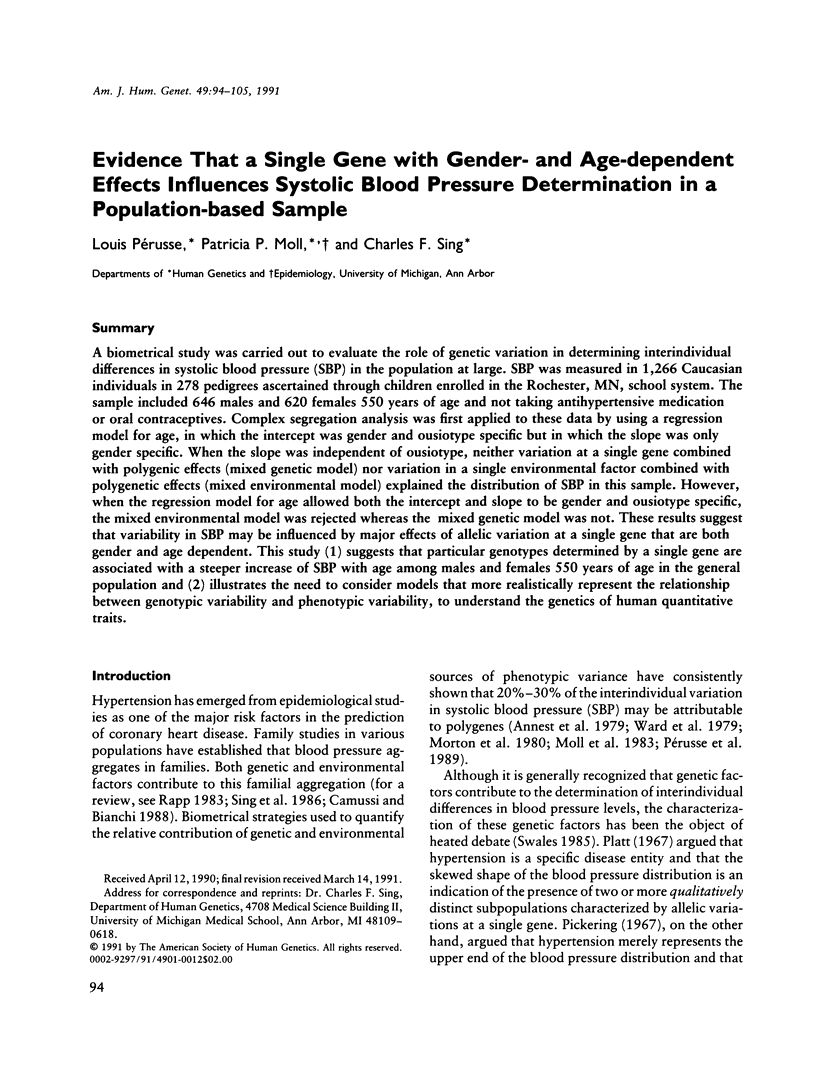
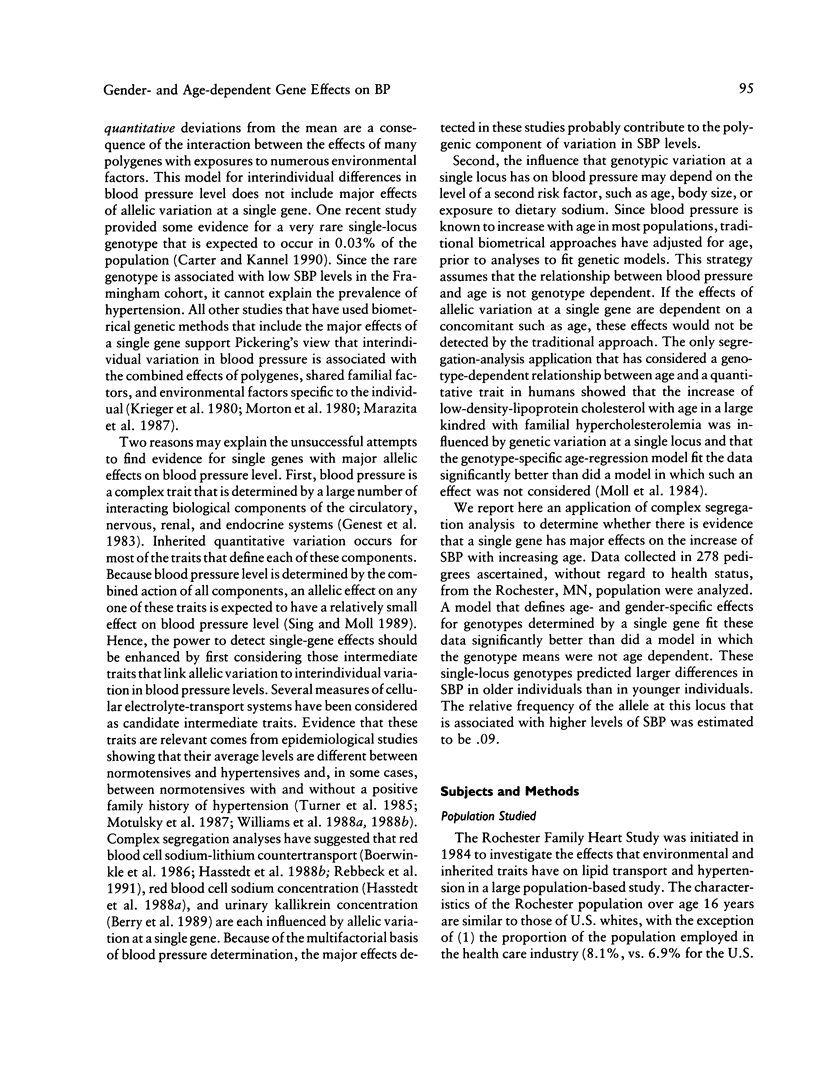
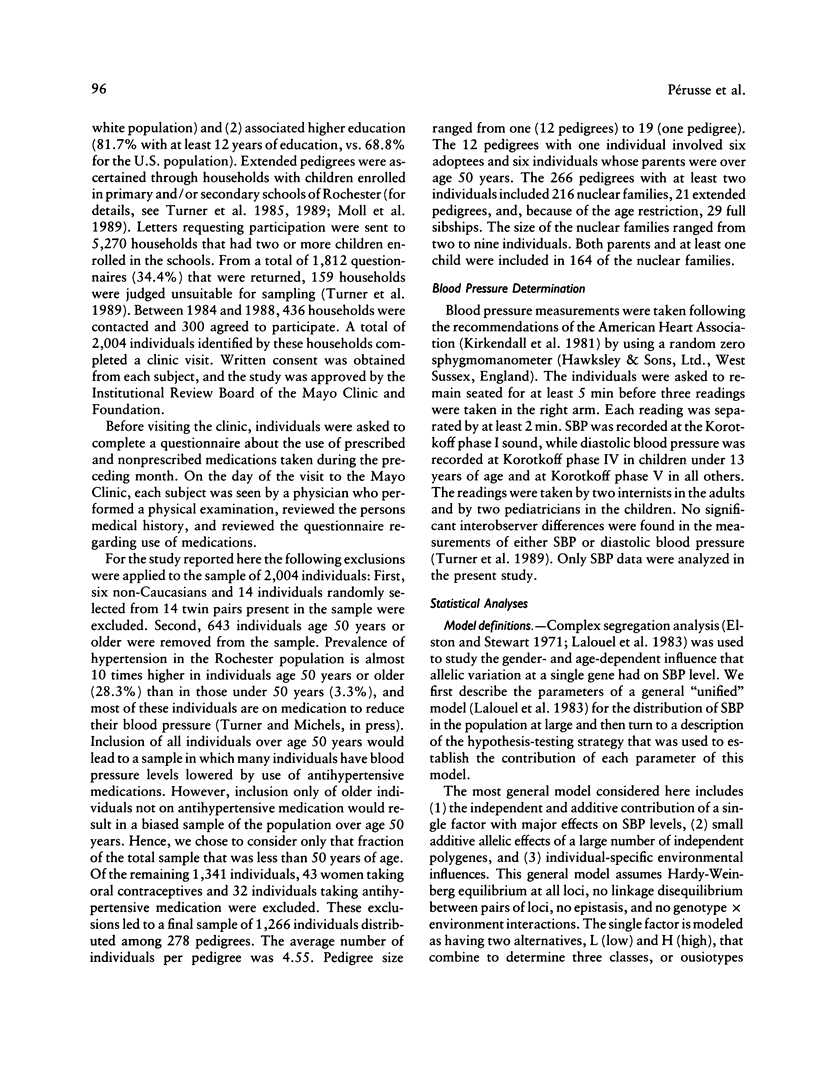
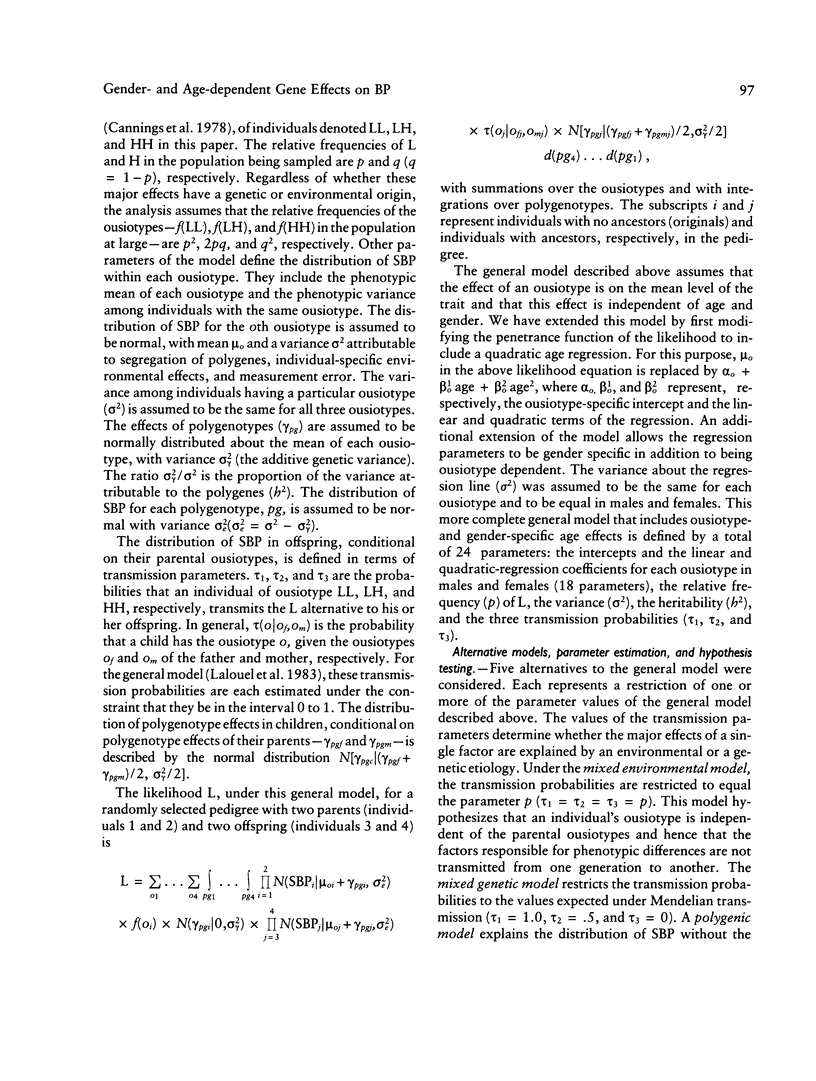
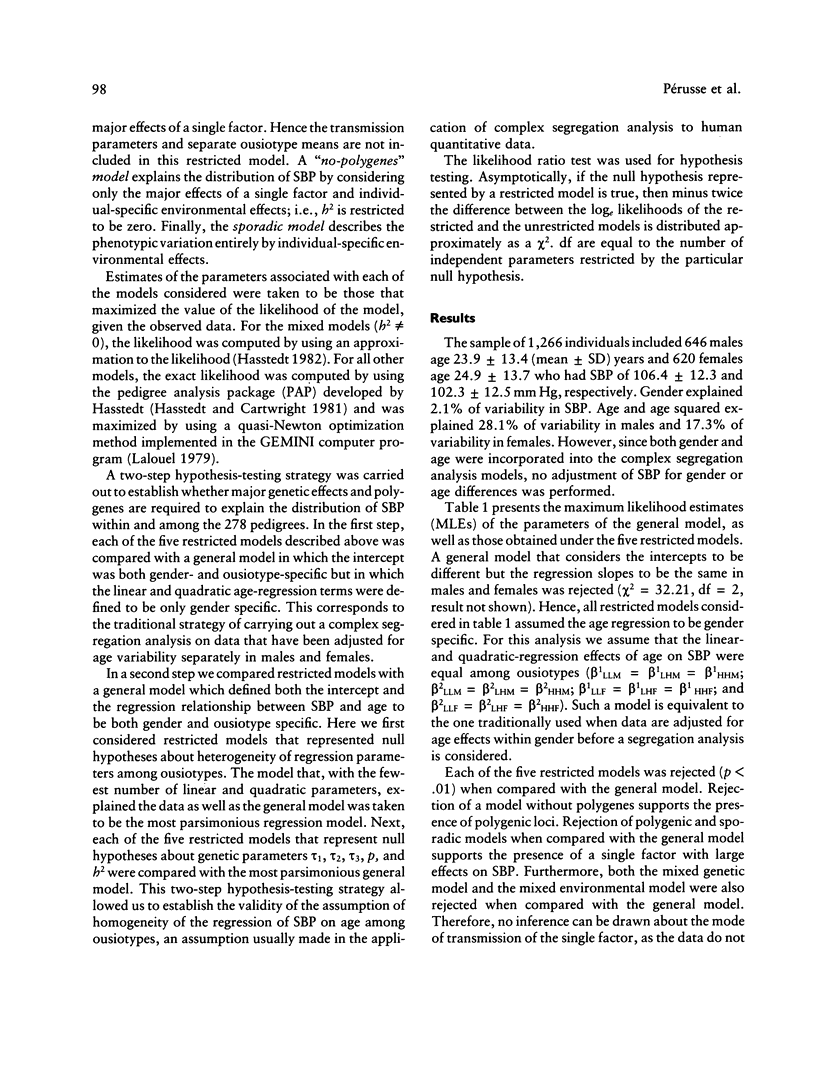
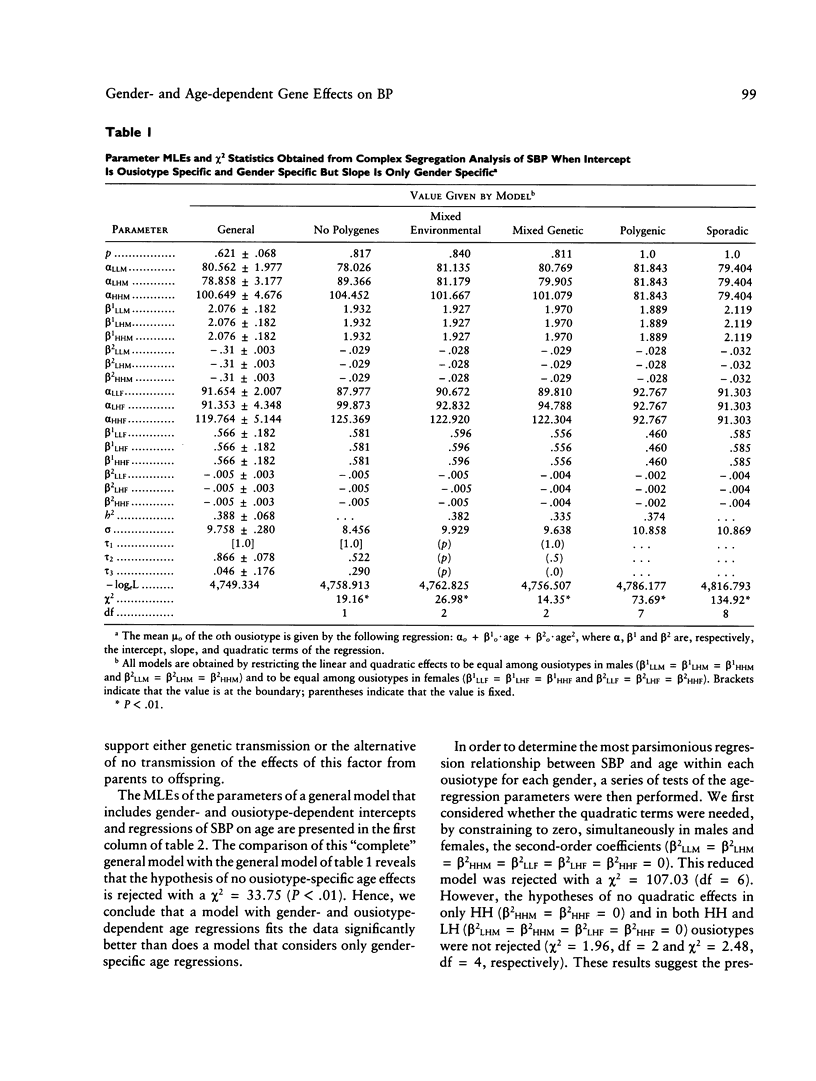
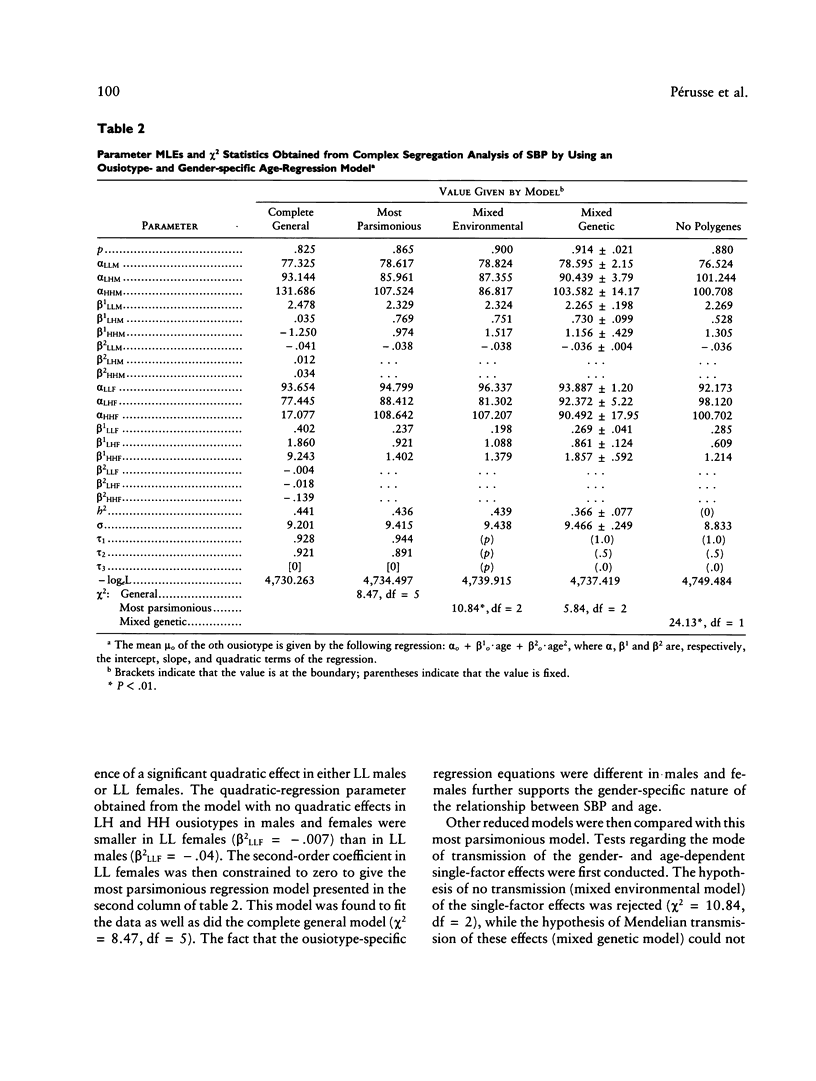
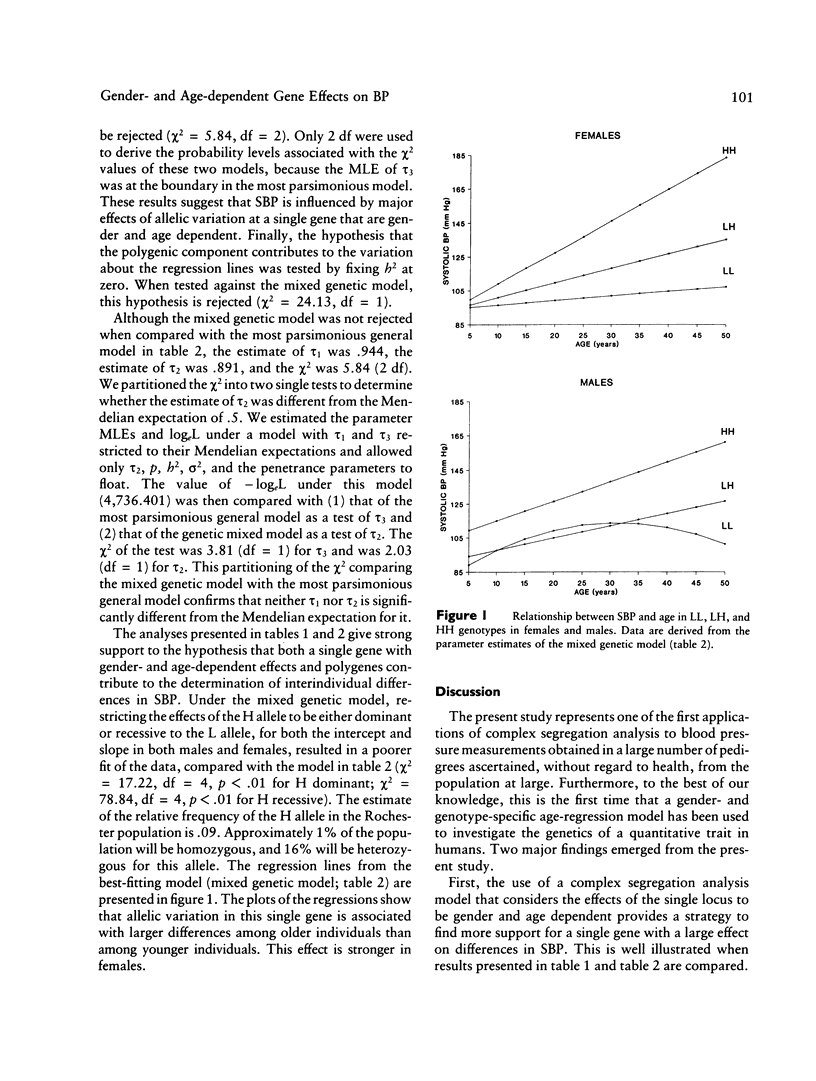
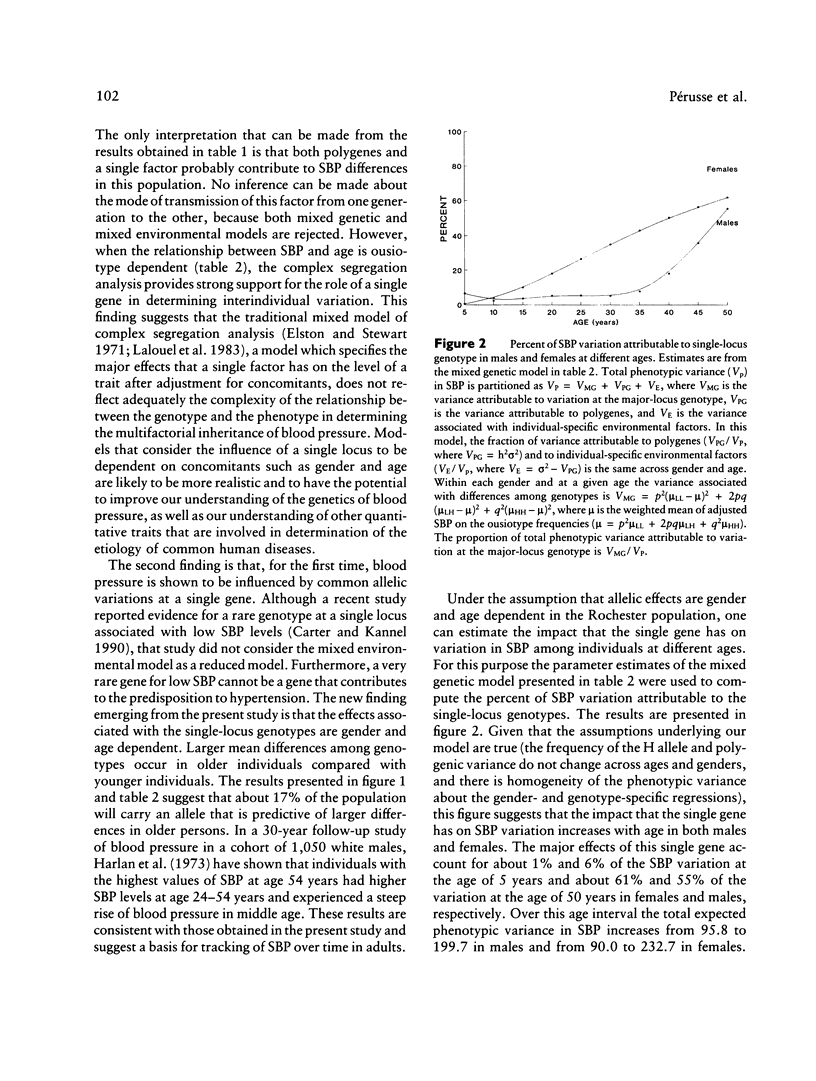
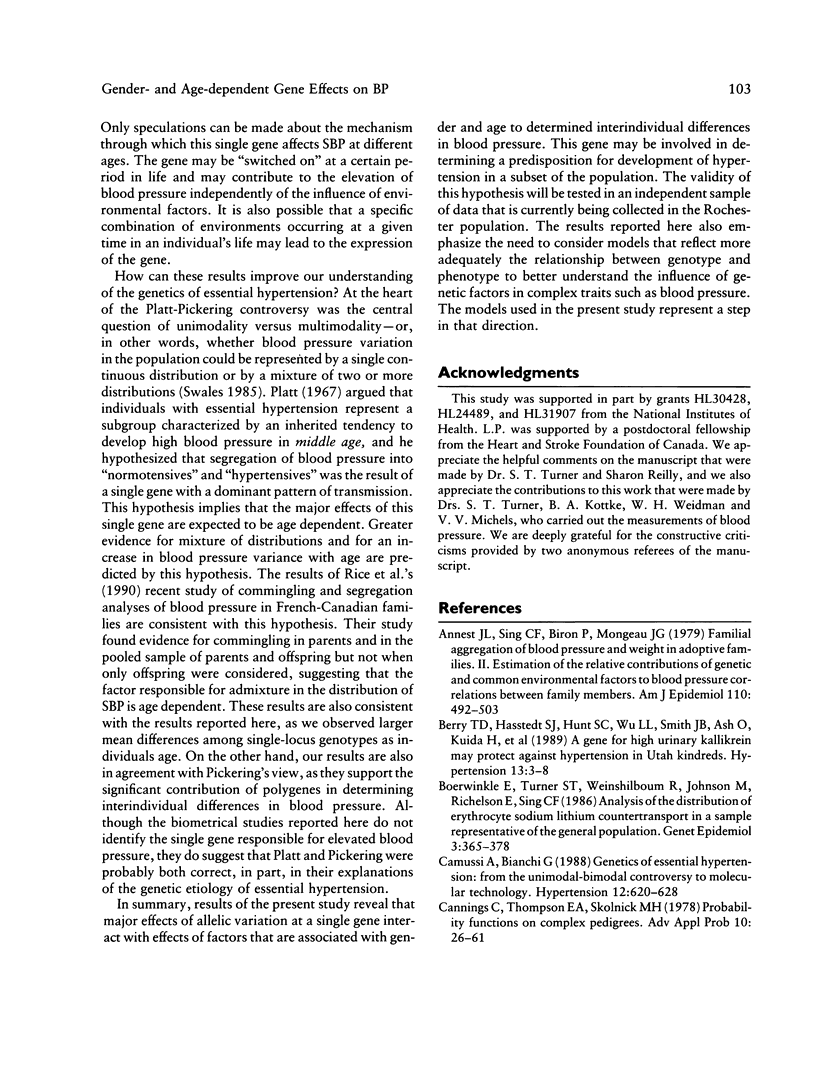
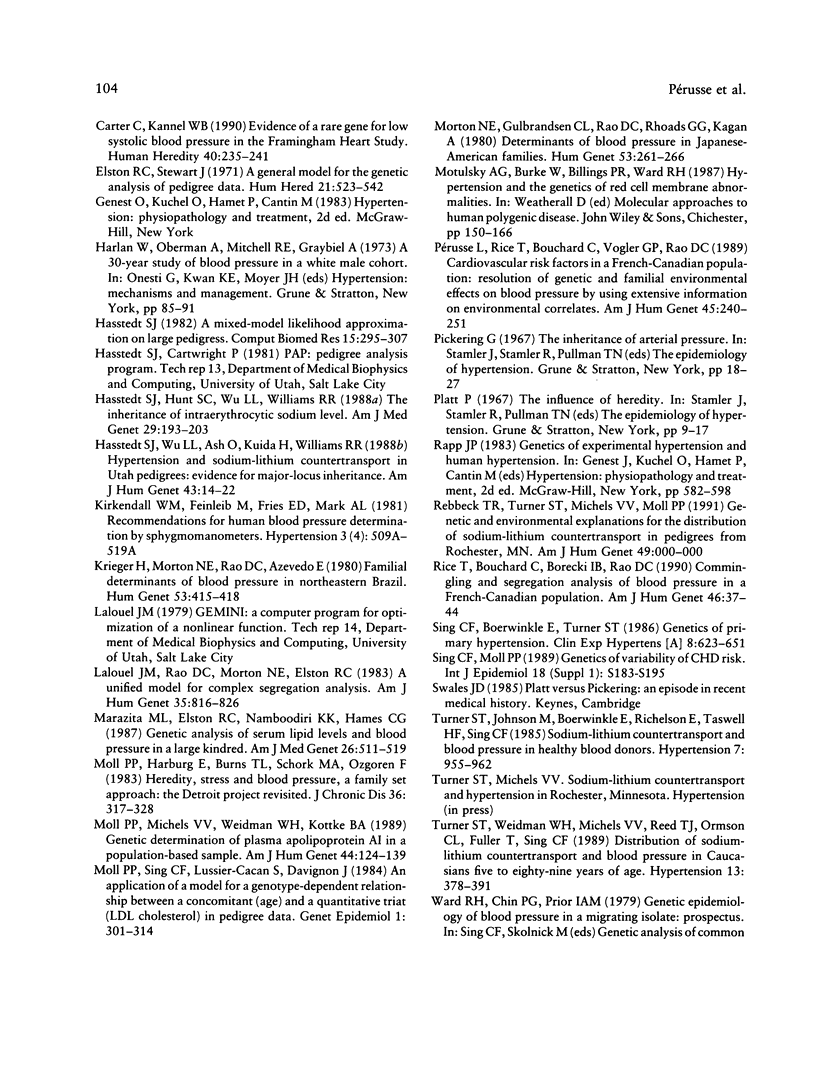

Selected References
These references are in PubMed. This may not be the complete list of references from this article.
- Annest J. L., Sing C. F., Biron P., Mongeau J. G. Familial aggregation of blood pressure and weight in adoptive families. II. Estimation of the relative contributions of genetic and common environmental factors to blood pressure correlations between family members. Am J Epidemiol. 1979 Oct;110(4):492–503. doi: 10.1093/oxfordjournals.aje.a112830. [DOI] [PubMed] [Google Scholar]
- Berry T. D., Hasstedt S. J., Hunt S. C., Wu L. L., Smith J. B., Ash K. O., Kuida H., Williams R. R. A gene for high urinary kallikrein may protect against hypertension in Utah kindreds. Hypertension. 1989 Jan;13(1):3–8. doi: 10.1161/01.hyp.13.1.3. [DOI] [PubMed] [Google Scholar]
- Boerwinkle E., Turner S. T., Weinshilboum R., Johnson M., Richelson E., Sing C. F. Analysis of the distribution of erythrocyte sodium lithium countertransport in a sample representative of the general population. Genet Epidemiol. 1986;3(5):365–378. doi: 10.1002/gepi.1370030509. [DOI] [PubMed] [Google Scholar]
- Camussi A., Bianchi G. Genetics of essential hypertension. From the unimodal-bimodal controversy to molecular technology. Hypertension. 1988 Dec;12(6):620–628. doi: 10.1161/01.hyp.12.6.620. [DOI] [PubMed] [Google Scholar]
- Carter C. L., Kannel W. B. Evidence of a rare gene for low systolic blood pressure in the Framingham Heart Study. Hum Hered. 1990;40(4):235–241. doi: 10.1159/000153936. [DOI] [PubMed] [Google Scholar]
- Elston R. C., Stewart J. A general model for the genetic analysis of pedigree data. Hum Hered. 1971;21(6):523–542. doi: 10.1159/000152448. [DOI] [PubMed] [Google Scholar]
- Hasstedt S. J. A mixed-model likelihood approximation on large pedigrees. Comput Biomed Res. 1982 Jun;15(3):295–307. doi: 10.1016/0010-4809(82)90064-7. [DOI] [PubMed] [Google Scholar]
- Hasstedt S. J., Hunt S. C., Wu L. L., Williams R. R. The inheritance of intraerythrocytic sodium level. Am J Med Genet. 1988 Jan;29(1):193–203. doi: 10.1002/ajmg.1320290125. [DOI] [PubMed] [Google Scholar]
- Hasstedt S. J., Wu L. L., Ash K. O., Kuida H., Williams R. R. Hypertension and sodium-lithium countertransport in Utah pedigrees: evidence for major-locus inheritance. Am J Hum Genet. 1988 Jul;43(1):14–22. [PMC free article] [PubMed] [Google Scholar]
- Kirkendall W. M., Feinleib M., Freis E. D., Mark A. L. Recommendations for human blood pressure determination by sphygmomanometers. Subcommittee of the AHA Postgraduate Education Committee. Hypertension. 1981 Jul-Aug;3(4):510A–519A. [PubMed] [Google Scholar]
- Krieger H., Morton N. E., Rao D. C., Azevêdo E. Familial determinants of blood pressure in northeastern Brazil. Hum Genet. 1980;53(3):415–418. doi: 10.1007/BF00287065. [DOI] [PubMed] [Google Scholar]
- Lalouel J. M., Rao D. C., Morton N. E., Elston R. C. A unified model for complex segregation analysis. Am J Hum Genet. 1983 Sep;35(5):816–826. [PMC free article] [PubMed] [Google Scholar]
- Marazita M. L., Elston R. C., Namboodiri K. K., Hames C. G. Genetic analysis of serum lipid levels and blood pressure in a large kindred. Am J Med Genet. 1987 Mar;26(3):511–519. doi: 10.1002/ajmg.1320260302. [DOI] [PubMed] [Google Scholar]
- Moll P. P., Harburg E., Burns T. L., Schork M. A., Ozgoren F. Heredity, stress and blood pressure, a family set approach: the Detroit Project revisited. J Chronic Dis. 1983;36(4):317–328. doi: 10.1016/0021-9681(83)90117-0. [DOI] [PubMed] [Google Scholar]
- Moll P. P., Michels V. V., Weidman W. H., Kottke B. A. Genetic determination of plasma apolipoprotein AI in a population-based sample. Am J Hum Genet. 1989 Jan;44(1):124–139. [PMC free article] [PubMed] [Google Scholar]
- Moll P. P., Sing C. F., Lussier-Cacan S., Davignon J. An application of a model for a genotype-dependent relationship between a concomitant (age) and a quantitative trait (LDL cholesterol) in pedigree data. Genet Epidemiol. 1984;1(4):301–314. doi: 10.1002/gepi.1370010403. [DOI] [PubMed] [Google Scholar]
- Morton N. E., Gulbrandsen C. L., Rao D. C., Rhoads G. G., Kagan A. Determinants of blood pressure in Japanese-American Families. Hum Genet. 1980 Feb;53(2):261–266. doi: 10.1007/BF00273508. [DOI] [PubMed] [Google Scholar]
- Pérusse L., Rice T., Bouchard C., Vogler G. P., Rao D. C. Cardiovascular risk factors in a French-Canadian population: resolution of genetic and familial environmental effects on blood pressure by using extensive information on environmental correlates. Am J Hum Genet. 1989 Aug;45(2):240–251. [PMC free article] [PubMed] [Google Scholar]
- Rice T., Bouchard C., Borecki I. B., Rao D. C. Commingling and segregation analysis of blood pressure in a French-Canadian population. Am J Hum Genet. 1990 Jan;46(1):37–44. [PMC free article] [PubMed] [Google Scholar]
- Sing C. F., Boerwinkle E., Turner S. T. Genetics of primary hypertension. Clin Exp Hypertens A. 1986;8(4-5):623–651. doi: 10.3109/10641968609046580. [DOI] [PubMed] [Google Scholar]
- Sing C. F., Moll P. P. Genetics of variability of CHD risk. Int J Epidemiol. 1989;18(3 Suppl 1):S183–S195. [PubMed] [Google Scholar]
- Turner S. T., Johnson M., Boerwinkle E., Richelson E., Taswell H. F., Sing C. F. Sodium-lithium countertransport and blood pressure in healthy blood donors. Hypertension. 1985 Nov-Dec;7(6 Pt 1):955–962. doi: 10.1161/01.hyp.7.6.955. [DOI] [PubMed] [Google Scholar]
- Turner S. T., Weidman W. H., Michels V. V., Reed T. J., Ormson C. L., Fuller T., Sing C. F. Distribution of sodium-lithium countertransport and blood pressure in Caucasians five to eighty-nine years of age. Hypertension. 1989 Apr;13(4):378–391. doi: 10.1161/01.hyp.13.4.378. [DOI] [PubMed] [Google Scholar]
- Williams R. R., Hunt S. C., Wu L. L., Hasstedt S. J., Hopkins P. N., Ash K. O. Genetic and epidemiological studies on electrolyte transport systems in hypertension. Clin Physiol Biochem. 1988;6(3-4):136–149. [PubMed] [Google Scholar]


